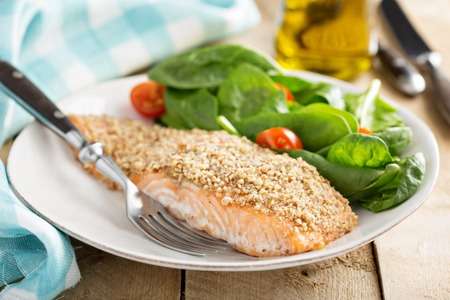The Basic Postpartum Diet

In this article, you will find:
Omega-6 fatty acids
Omega-6 Fatty Acids
Omega-6 fats have a different structure from the omega-3s, and when they are incorporated into cell membranes, they subtly alter the membrane's structure and activity.
It is true that mother's milk is the best source of omega-3s for babies, but the amount of these EFAs in breast milk varies widely depending on the mother's diet. Inuit women, who eat fish and seal meat daily, have a ratio of omega-6 to long-chain omega-3 fats (EPA and DHA) of about 4:1. At the same time, one study showed that the average American woman's milk contains these fats in a ratio of 175:1! If the omega-6/omega-3 ratio becomes skewed in this way, an imbalance of prostaglandin production results, increasing your vulnerability to allergies, autoimmune diseases, mood disorders, joint pain, and other problems. By cutting down on omega-6 fats in particular, linoleic acid from processed vegetable, nut, and seed oils and boosting your intake of omega-3s, you can supply your baby and yourself with a more ideal ratio of these fats.
Corn oil, soybean oil, safflower oil, sunflower oil, and cottonseed oil all contain plentiful amounts of linoleic acid (LA), one of the omega-6 fats. These oils are found in a great many processed foods, and it is the rare Westerner who does not get plenty of linoleic acid every day. Worse, these oils are usually hydrogenated or partially hydrogenated to make them solid instead of liquid. This process alters the molecular composition of the fatty acids so that they are inflexible. Over time, these inflexible fats are incorporated into cell membranes, compromising the cells' ability to bring in needed substances and flush out wastes. Hydrogenated fats also contribute to an increasing burden of "bad" prostaglandins. The fatty acids in hydrogenated oils are known as trans fats or trans-fatty acids, and they pass right into your breast milk and into your baby's body. Read labels carefully; if you see the words hydrogenated or partially hydrogenated on a label, put the product back on the shelf. Be forewarned: You will find hydrogenated and partially hydrogenated oils in just about every type of processed food, including cookies, crackers, frozen foods, margarine, potato and corn chips, pies, pastries, salad dressings, and soups.
It is unlikely that your health will be improved if you add more foods containing linoleic acid to your diet. Supplemental black currant seed, borage, and evening primrose seed oils, however, contain a specific omega-6 fat, gamma-linolenic acid (GLA), that is scarce in food. The most significant food source of GLA is oatmeal. This fat has been demonstrated to be helpful for relief from attention deficit disorder, multiple sclerosis, depression, and mood swings. GLA can be transformed in the body into an anti-inflammatory, brain-supporting prostaglandin called prostaglandin E1 (PGE1).